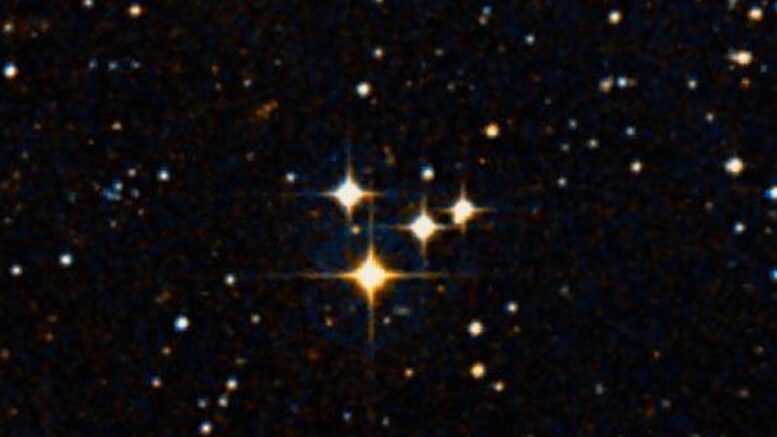Messier 73 is an asterism formed by four physically unrelated stars located in the southern constellation Aquarius. The four stars that form the Y-shaped asterism only appear close to each other in the sky because they are located along the same line of sight when seen from Earth.
Messier 73 was previously thought to be a poorly populated open star cluster and its stars were believed to be bound by gravitational attraction. Today, it is known to be one of the three Messier objects that are not deep sky objects at all.
| Description | |
| Visible From Pacific Northwest | May To September |
| Best Time To Observe | July and August |
| Minimum Size Of Viewing Device | Small Telescope / Large Binoculars |
| Object Type | Asterism |
| Designations | Messier 73, M73, NGC 6994, Collinder 426, C 2056-128, OCl 89 |
| Right Ascension | 20h 58m 54s |
| Declination | -12°38′ |
| Constellation | Acquarius |
| Number Of Stars | 4 |
| Apparent magnitude | +9.0 |
| Apparent dimensions | 2′.8 |
| Distance From Earth | 2,500 light years |
History
Charles Messier discovered M73 on October 4, 1780 and added it to his catalogue as object number 73. He described it as a cluster with some nebulosity.
William Herschel observed the object on September 28, 1783 and noted that it “consists of a few stars arranged in triangular form,” adding that there was “no nebulosity among them.”
John Herschel questioned Messier’s designation of M73 as a cluster, but added the object to his General Catalogue nonetheless as GC 4617. He noted, “Cluster ??; extremely poor; very little compressed; no nebulosity.”
However, as recently as 2000, a photometry study suggested that M73 was a cluster remnant, about 9 arc minutes wide, with an estimated age of 2 to 3 billion years.
Locating M73 In The Sky
It is positioned about 1.5 degrees east of the globular cluster Messier 72, and just below the imaginary line connecting the bright stars Fomalhaut in Piscis Austrinus and Altair in Aquila constellation.
M73 can also be found 2 degrees south and 1.5 degrees east of the magnitude 4.5 star Albulaan, Nu Aquarii. As both Aquarius and Capricornus are relatively faint constellations, M72 and M73 are among the more challenging Messier objects to find.

Viewing M73
The stars of M73 are quite faint and not easy to observe in 10×50 binoculars. Larger binoculars will reveal a dim point of light, while a 4-inch telescope will show the Y shape clearly. The best time of year to observe M73 is during the summer.
Photographing M73
There are not many guides outside out cloudy nights and astrobin to find recommendations. As Messier 73 is more considered an asterism than a deep sky object, it is often overlooked by astrophotographers. There will need to be research before attempting to photograph this Messier object.
http://www.perseus.gr/Astro-DSO-NGC-6994.htm
Sources And Further Reading
Descriptions of all of Messier Objects can be found here.
https://www.messier.seds.org/m/m073.html

Be the first to comment on "Messier 73"